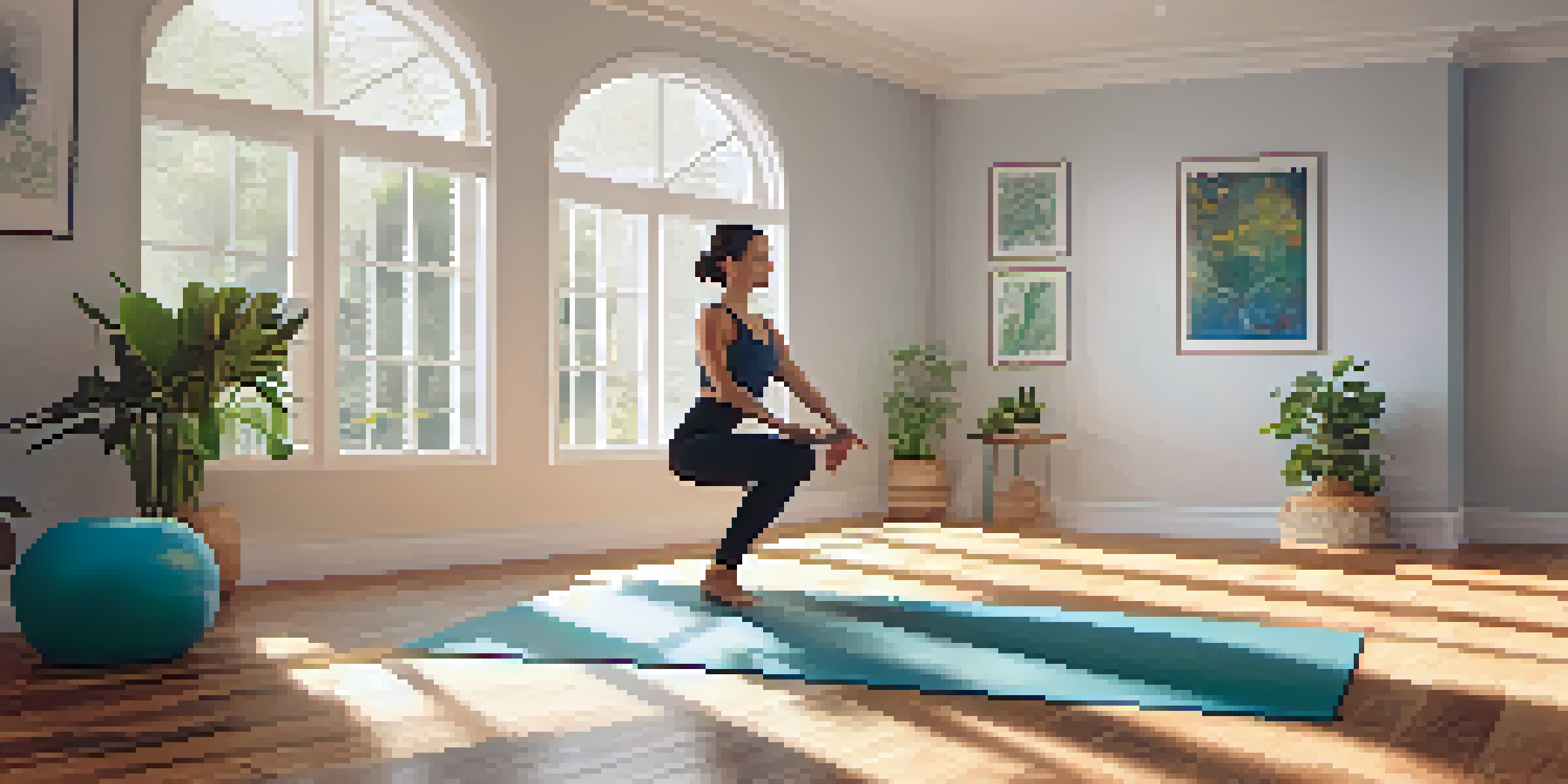Hatha Yoga for Beginners: A Gentle Introduction to the Practice

What is Hatha Yoga? Understanding Its Essence
Hatha Yoga is a foundational practice that combines physical postures (asanas), breath control (pranayama), and meditation. It's often seen as a gentle introduction to yoga, making it perfect for beginners. The term 'Hatha' itself translates to 'sun' and 'moon,' symbolizing balance—a key principle in this practice.
Yoga is the journey of the self, through the self, to the self.
Unlike more vigorous styles of yoga, Hatha focuses on aligning the body and calming the mind. This makes it accessible to individuals of all fitness levels. Whether you're looking to increase flexibility, build strength, or simply relax, Hatha Yoga offers something for everyone.
By practicing Hatha Yoga, you not only enhance your physical health but also cultivate mental clarity and emotional stability. This holistic approach helps create a sense of balance in your daily life, making it a versatile choice for anyone starting their yoga journey.
The Benefits of Hatha Yoga for Beginners
Starting a Hatha Yoga practice can bring a multitude of benefits. Physically, it improves flexibility, strength, and posture while reducing muscle tension. Mentally, it promotes relaxation and stress relief, helping to clear your mind and enhance focus.

Additionally, Hatha Yoga encourages mindfulness through breath awareness and meditation techniques. This can lead to improved emotional health, helping you manage anxiety and develop a more positive outlook on life. It's like giving your mind a much-needed vacation.
Hatha Yoga Balances Body and Mind
This practice combines physical postures, breath control, and meditation, promoting overall well-being.
Many beginners find that the gentle pace of Hatha Yoga allows them to build confidence in their practice. As you learn to connect with your body and breath, you'll notice an increase in self-awareness and a deeper appreciation for your own capabilities.
Getting Started: Essential Equipment for Hatha Yoga
One of the great things about Hatha Yoga is that you don’t need much equipment to get started. A good-quality yoga mat is essential, providing grip and cushioning for your practice. You may also want to invest in a couple of props like blocks and straps to help support your body in various poses.
The mind is everything. What you think you become.
Comfortable clothing is another key aspect. Look for breathable, stretchy fabric that allows you to move freely without restriction. Remember, the goal is to feel at ease while you practice, so choose attire that makes you feel good.
Lastly, consider creating a dedicated space for your practice, even if it’s just a small corner of your home. This personal sanctuary can help cultivate a peaceful mindset, making it easier to engage in your Hatha Yoga journey.
Basic Hatha Yoga Poses Every Beginner Should Know
As a beginner, it's beneficial to familiarize yourself with some foundational Hatha Yoga poses. Starting with Mountain Pose (Tadasana) helps establish a strong foundation, promoting proper alignment and grounding. It's all about standing tall and feeling connected to the earth beneath you.
Next up is Downward-Facing Dog (Adho Mukha Svanasana), which stretches the entire body and strengthens the arms and legs. This pose is also an excellent way to relieve tension from your back. Think of it as a rejuvenating stretch that helps shake off the day’s stress.
Benefits for Beginners Abound
Hatha Yoga enhances flexibility, strength, and mental clarity, making it accessible and rewarding for newcomers.
Finally, Child’s Pose (Balasana) is a gentle resting position that allows you to relax and reconnect with your breath. It’s perfect for taking a moment to pause during your practice, reminding you that it’s okay to slow down and simply be.
Finding Your Breath: The Importance of Pranayama
Pranayama, or breath control, is a vital aspect of Hatha Yoga that enhances your practice. Learning to focus on your breath allows you to find a rhythm in your movements, promoting a deeper connection between body and mind. It’s like discovering a hidden power that can transform your experience.
Incorporating simple breathing techniques can help calm your nervous system and reduce stress. For example, try inhaling deeply through your nose, holding for a moment, and exhaling slowly through your mouth. This practice can create a sense of tranquility that extends beyond your yoga mat.
As you progress, you’ll find that your breath can guide you through challenging poses and moments of discomfort. Embracing pranayama not only enriches your yoga practice but also equips you with tools to navigate life’s ups and downs with grace.
Creating a Consistent Hatha Yoga Practice
Establishing a consistent Hatha Yoga routine is key to reaping its benefits. Start by setting aside a specific time each week to practice, gradually increasing the frequency as you become more comfortable. Consistency helps you develop a deeper understanding of the poses and your body.
Even just 15-30 minutes of practice a few times a week can make a significant difference. Consider incorporating a mix of poses, breath work, and meditation to keep your sessions engaging and well-rounded. Think of it as carving out a little pocket of peace in your busy schedule.
Community Boosts Yoga Experience
Joining a group class provides motivation and support, enriching your Hatha Yoga journey through shared experiences.
Remember, the journey of yoga is unique to each individual. Be patient with yourself and celebrate small victories along the way. With time, you’ll find that Hatha Yoga becomes not just a practice, but a rewarding part of your daily life.
Joining a Community: The Power of Group Practice
While practicing Hatha Yoga at home is beneficial, joining a local class can enhance your experience significantly. Being part of a community not only provides motivation but also allows you to learn from experienced instructors and fellow practitioners. It's like having a supportive family on your yoga journey.
Group classes can also introduce you to new poses and techniques you might not explore on your own. Plus, the energy of practicing alongside others can be incredibly uplifting, helping you stay committed to your practice. It transforms yoga into a shared experience rather than a solitary one.

Don’t be afraid to ask questions or seek guidance in a class setting. Instructors are there to help you, ensuring that you practice safely and effectively. Embracing this sense of community can enrich your Hatha Yoga journey and make it even more enjoyable.